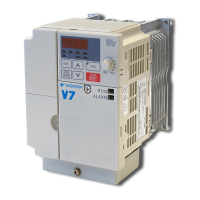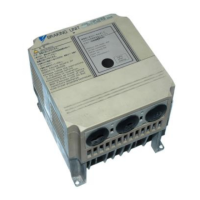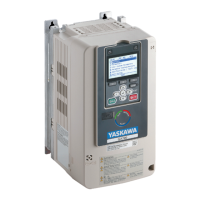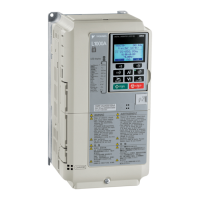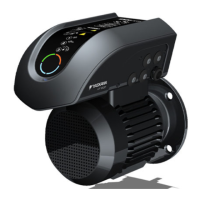11.10 n: Special Adjustment
772 YASKAWA SIEPC71061723A YASKAWA AC Drive CR700 Technical Manual
■ n2-03: Automatic Freq Regulator Time 2
No.
(Hex.)
Name Description
Default
(Range)
n2-03
(0586)
Automatic Freq Regulator
Time 2
Sets the time constant to determine the variation in speed of the AFR function. Use this parameter
during regeneration. Usually it is not necessary to change this setting.
750 ms
(0 - 2000 ms)
Adjust this parameter in these conditions:
• If the drive detects ov [Overvoltage] when acceleration stops under high-inertia loads, increase the setting value
in 50 ms increments.
If the drive detects ov when the load changes suddenly, increase the setting value in 50 ms increments.
• To increase the responsiveness of torque and speed, decrease the setting value in 10 ms increments and examine
the response.
Note:
• Set n2-03 ≤ n2-02 [Automatic Freq Regulator Time 1]. If n2-02 > n2-03, the drive will detect oPE08 [Parameter Selection Error].
• When you change the value in n2-03, also change the value in C4-06 [Motor 2 Torque Comp Delay Time] by the same ratio.
■ n2-06: Automatic Freq Regulator Gain(R)
No.
(Hex.)
Name Description
Default
(Range)
n2-06
(1567)
Automatic Freq Regulator
Gain(R)
Sets the gain of the AFR function for reverse run as a magnification value. Usually it is not
necessary to change this setting.
1.00
(0.00 - 10.00)
◆ n3: Overexcitation Braking
n3 parameters are used to set overexcitation deceleration.
■ Overexcitation Deceleration
Overexcitation deceleration is used to quickly decelerate motors without connecting braking resistors to the drive.
This enables motors to be stopped more quickly than with normal ramp to stop processes.
Overexcitation deceleration generates significant braking torque through motor overexcitation by increasing
excitation current during deceleration.
The deceleration time can be adjusted for overexcitation deceleration by specifying the deceleration speed.
Reacceleration of motors can also be performed during deceleration. Entering the Run command during
overexcitation deceleration cancels overexcitation deceleration and the drive reaccelerates to the specified speed.
To enable this function, set L3-04 =4, 5 [Stall Prevention during Decel = Overexcitation/High Flux,
Overexcitation/High Flux 2].
When L3-04 = 4, motors decelerate for the currently valid Deceleration Times [C1-02, C1-04, C1-06, or C1-08].
Increase the deceleration time when ov [Overvoltage] issues occur.
When L3-04 = 5, the drive decelerates with the Deceleration Times [C1-02, C1-04, C1-06, or C1-08] while
adjusting the deceleration rate to keep the DC bus voltage at the level set in L3-17 [DC Bus Regulation Level].
The actual stopping time will be longer or shorter than the set deceleration time depending on the motor
characteristics and the load inertia.
Notes on Overexcitation Deceleration
• Do not use Overexcitation Deceleration in combination with a braking resistor option.
• Do not use Overexcitation Deceleration for the following applications. Connect a braking resistor to the drive
instead of using Overexcitation Deceleration.
– Frequent repetition of sudden decelerations
– Continuous regenerative loads
– Low inertia machines
– Machines that have no tolerance for torque ripples
• Motor loss increases during overexcitation deceleration. Use this function under conditions of duty time factors
of 5% ED or less and braking times of 90 seconds or less. Braking time varies depending on the load inertia and
motor characteristics.
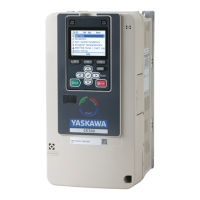
